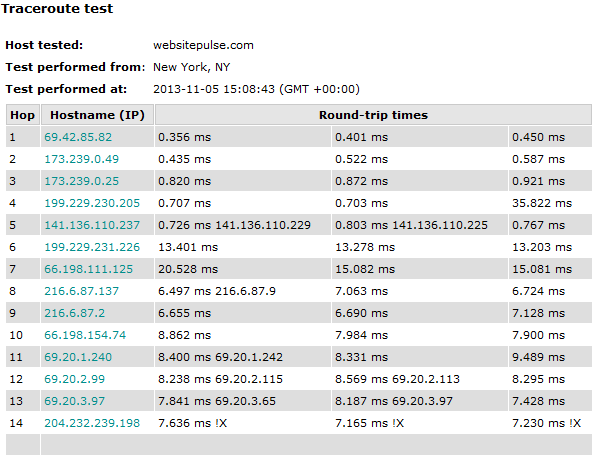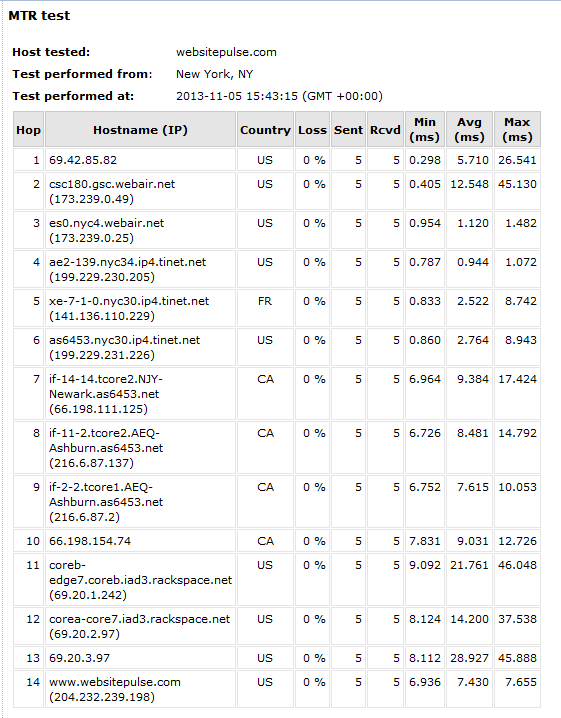
You have probably heard of or even used PING, Trace route and MTR tools, but how many of you know exactly how they work?
As you are already reading this post, then you are probably interested to find out, so we are directly cutting to the chase.
We start off with some general information about the protocol that is responsible for the PING, Trace route and MTR tests – the Internet Control Message Protocol – (ICMP). ICMP is a message-control and error-reporting protocol between two hosts, operating in Layer 3 (Network) of the OSI model. The protocol is not a reliable one, but it could transmit messages even if certain errors are detected. That is the reason why it is used for testing purposes.
PING
PING uses the aforementioned ICMP protocol to send out echo requests for responses from a selected host. If the request is received by the tested host, it will reply with an ICMP Echo Reply message. The reply time for each packet sent is measured and displayed. Here is an example of a ping test being executed from command prompt:

The command used is PING, followed by the hostname or IP address of the host that you want to test. As seen from the output, there is no packet loss, which means that the host tested is accessible. The reply times are also displayed, in this case averaging 144ms.
You can PING your website using our free test tools. Type the domain or the IP address of the host that you want to PING, choose a testing location and click the Perform Test button.
Trace Route
The Trace Route test, also known as traceroute and tracert, is a utility that maps the path between the tested hosts. The results are then displayed as a list of hops. The information provided could be used to identify a weak link along the route. If the test fails at a certain point, the IP address of the last router that responded properly is known, so the problem could then be identified more easily. Here is an example of a Trace Route test being executed from the WebSitePulse Free Test Tools platform:

This test also uses ICMP packets and relies on a function called TTL – (Time to Live) in the header of this Layer 3 protocol. The value is used to set the maximum number of hops a packet can travel. When a packet is received on a router, the TTL value is lowered by 1. When the TTL reaches 0, the packet is dropped.
The actual test sends a sequence of three messages. The first sequence has a TTL value of 1, which means that the packet will be dropped at the first hop. The router will decrease the TTL to 0, and an ICMP Time Exceeded Message will be returned. That way we will know the IP address of the first router. The second sequence has a TTL value of 2. The TTL will be zeroed at the second hop and the Time Exceeded Message will again be returned as a reply thus notifying us of the second’s router IP address. The TTL value will continue to increase until the host tested is reached. The respective round-trip times are also displayed in the output.
You can also run a Trace Route test from your Windows / Linux based machine. The Windows command is tracert and the Linux one is traceroute.
MTR
The MTR test is combination of the ones above. This test analyses the network connection between two hosts. It first determines the IP address of each of the hops and then sends a sequence of ICMP ECHO requests to each hop, thus providing information about the quality of the link. Below is shown the output from a MTR test using WebSitePulse Free Test Tools.

These basic tools provide sufficient information to localize the problem in an event of a failure. Understanding how they work is important for troubleshooting network connectivity.


 Copyright 2000-2026, WebSitePulse. All rights reserved.
Copyright 2000-2026, WebSitePulse. All rights reserved.